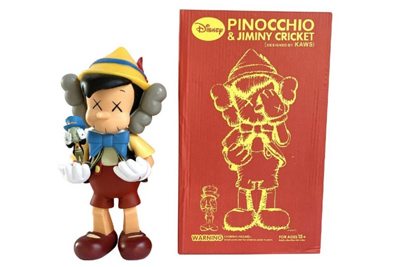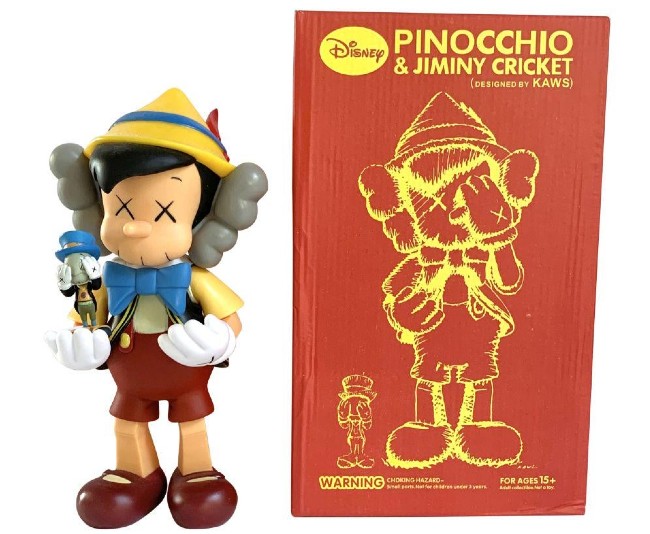
NEW YORK – Brian Donnelly (American, b. 1974-) is the graffiti artist and designer better known as KAWS. His toys, paintings, clothes and prints – which routinely and intentionally blur the lines between fine and commercial art – are wildly popular with fans and collectors worldwide. Pop Art and culture help define his cheeky, cartoonish Companion series of figurines, which at times can resemble the work of the contemporary artist Takashi Murakami (Japanese, b. 1962).
KAWS was born in New Jersey and today lives and works in Brooklyn, New York. He earned a bachelor’s degree from the School of Visual Arts in New York and for a time did double duty as a Disney animator by day and a rogue New York graffiti artist by night. His distinctive style took shape as he reworked versions of existing icons and created his own unique characters and motifs, many of which he’s used repeatedly from his early career on up to the present day.
Asked to explain his mysterious moniker, KAWS simply said, “When your whole art is based on the lettering you choose, you kinda figure out what ones work together. I just liked the shapes of the K, A, W and S.” In other words, the meaning of his alias is that it has no meaning, a posture that’s perfectly in keeping with KAWS’s persona. It’s one that has succeeded and resonated. His work can be found in galleries, museums, private collections and institutions, as well as on clothing, toys, skateboards and other products. KAWS is a global phenomenon.
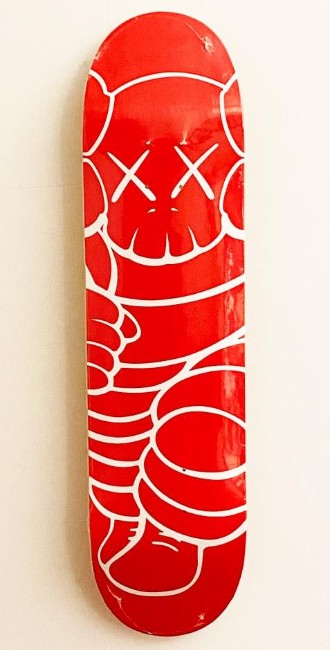
Leon Benrimon, director of Modern & Contemporary Art at Heritage Auctions in Dallas, Texas, said in order to understand the popularity of KAWS, it’s important to understand the psyche of the collector base that has supported and, in turn, propped up his market. “The collectors who are buying KAWS works are primarily millennials in their 20s, 30s and early 40s,” Benrimon said. “This generation grew up on the Michael Jordan sneaker culture, the explosion of rap music and modern-day street culture.”
Benrimon said the millennials’ heroes are Mickey Mouse, Astroboy, Snoopy and other iconography that KAWS has incorporated into his works. “Unlike their parents,” he said, “the millennials collect using tools such as Instagram and Facebook, and they learn about artists from friends and public art. They don’t use the traditional gallery-institution model that previous generations relied on. KAWS rose to fame through his collaborations with brands like the clothing brand Uniqglo and his unconventional means of getting his works out to the public by ‘subvertising’ telephone booth, bus stop and billboard advertisements.”
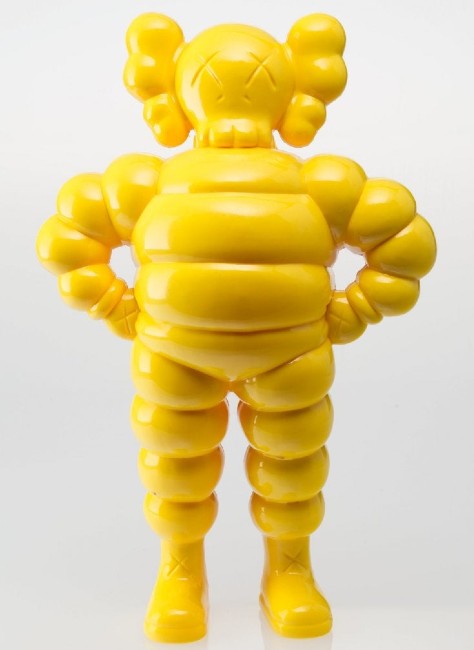
Travis Landry, director of Pop Culture at Bruneau & Co. Auctioneers in Cranston, Rhode Island, said what separates KAWS from the rest of the graffiti artist pack is that he’s more than just an artist with his own style – he’s a brand. “Even prior to all the hype that ramped up in 2016 and 2017, KAWS had collaborations with Supreme, A Bating Ape and, more recently, Dior,” Landry said.
“To put it in perspective, KAWS was collaborating with BAPE almost 20 years ago,” Landry commented. “His characters are iconic and original, playing off historical figures of pop culture like Mickey Mouse and his Companion, the Michelin Man, Smurfs, Snoopy, the Simpsons and SpongeBob, among others.”
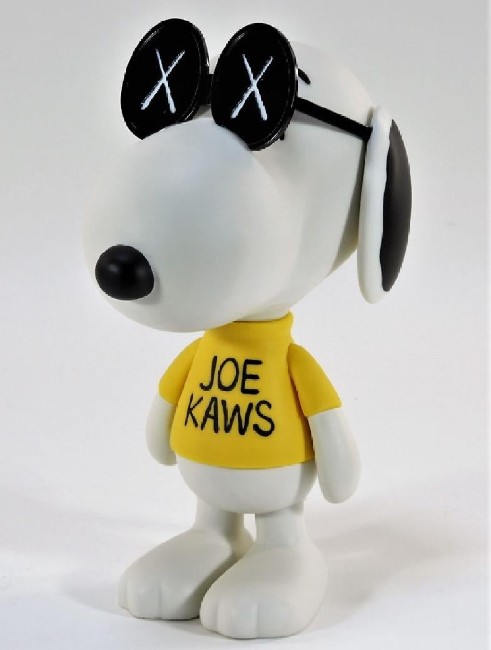
Landry added, “While KAWS is considered an American-born ‘street artist,’ he has deep cultural roots in the Asian pop culture community with his use of Sofubi as an artist medium. The ‘Toy as Art’ movement has always been around, but KAWS was the guy to take it to the tenth level. His partnership with Medicom—creating the brand OriginalFake—is what propelled his vinyl creations to the mass market. Toy culture has always been prevalent in Japan and Asia, which adds another attribute to KAWS attractiveness. The Asian market is what really pushed his results at auction in combination with all the celebrity praise.”
The current market demand for KAWS artwork has been helped by strong name recognition, Landry commented. “From high school students to rappers, athletes, fashion designers and museum board members, everybody knows KAWS,” he said. “Ten years ago his market was extremely niche. His vinyl sculptures, which today range from $800 to $5,000 and more, were accessible at retail for a few hundred bucks.”
Ten years ago, Landry pointed out, there wasn’t even a huge “flipper” market and the pieces were still relatively obtainable (with a small premium). “In 2018 and 2019, his standard vinyls edition of 500 were bringing astronomical numbers. Astroboy routinely fetched $4,000-$6,000 per sculpture. Tall Companions were in the $5,000 range. Even the Star Wars figures reached $30,000 for the set of three.”
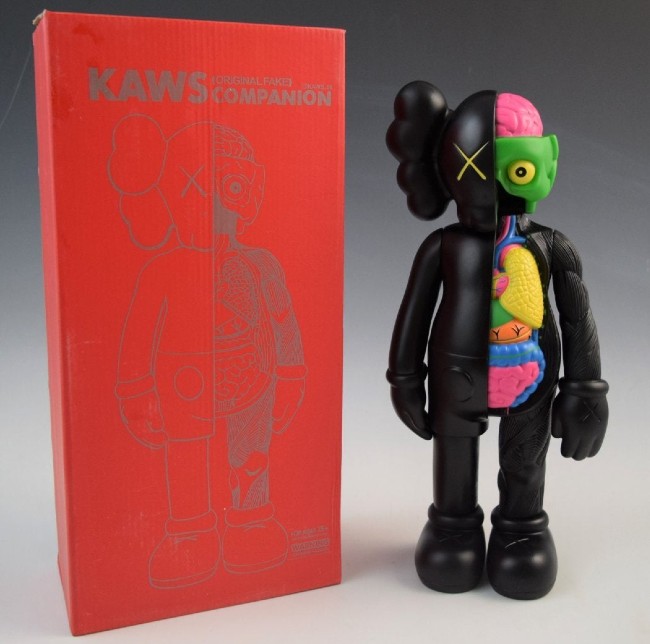
Today, however, the KAWS market has definitely made a correction, Landry said. “The vinyl sculptures are still hot, but not what they were in, say, summer 2018. The reason is simple—KAWS produces a ton of merchandise. If you want a piece of his art, there is always something available for sale. It may be difficult getting the newest release, but wait three months and you’ll have your chance.”
Landry said the majority of KAWS’s vinyls post-2018 have all been open editions, meaning there is always the chance more will be produced. “If you want to collect KAWS, it’s like everything else in the auction world—quality over quantity. I’d suggest buying something like a nice lithograph, an early edition of 500 sculpture or, if you’re fortunate enough, a small drawing or painting. History repeats itself. While KAWS collector plates are nice, I hope everyone remembers the Norman Rockwell plates of the 1990s. Look what we do with them today.”
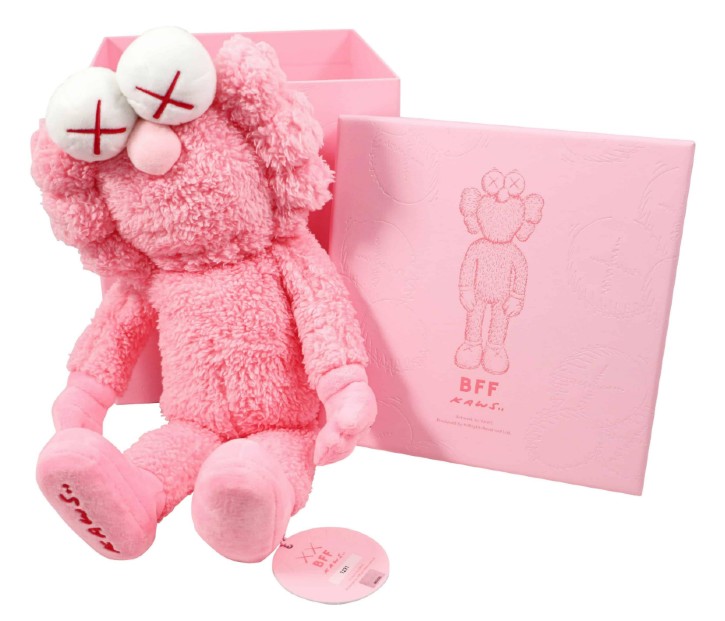
Leon Benrimon agreed there’s certainly an element of KAWS fatigue in the market right now, but he was quick to add the KAWS market is here to stay. “This new generation of collectors regard KAWS with the same importance that the previous generation assigned Andy Warhol,” he said.
Benrimon said the market for KAWS and demand for his work is “a multiple of what it was five years ago and infinitely greater than it was 10 years ago. While many see KAWS as a relatively new market phenomenon, they fail to recognize that KAWS created his first Companion works in the 1990s and his first mass-produced toys in 1999. He’s had a steady group of young collectors supporting him and buying his works throughout the 2000s.”
Last year, The Kaws Album (2005) sold at auction for a record $14.8 million, breaking the previous record for a work by KAWS of $2.7 million set in 2018. The album was a take-off of the Beatles’ album cover for Sgt. Pepper’s Lonely Hearts Club Band (1967). Only instead of images of celebrities, he replaced them with characters from The Simpsons, with his signature drawn across their eyes and skull. It was pure KAWS.


